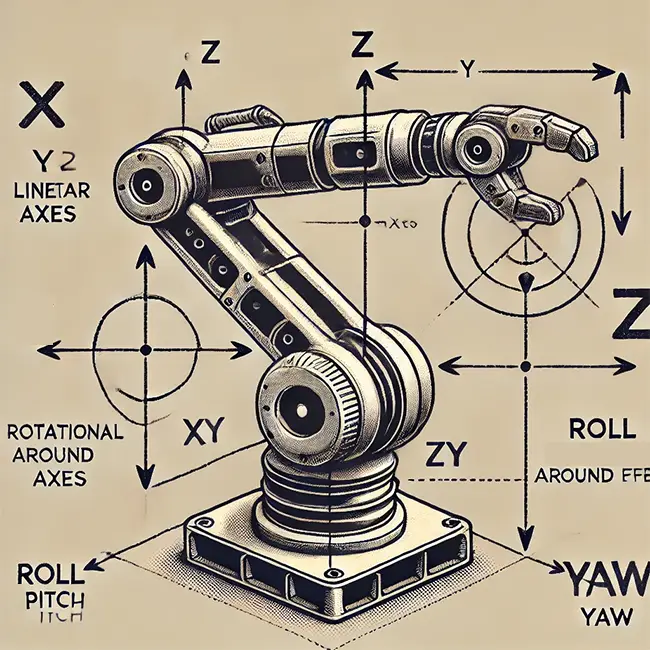What is an Axis in Robotics?
June 25, 2024

In robotics, an axis refers to a degree of freedom that a robot can move or rotate around. Each axis represents a different way the robot can maneuver. The more axes a robot has, the more flexible and versatile it becomes. For instance, a simple 2-axis robot can move in two different ways, while a 6-axis robot can move and rotate in six different directions.
A multi-axis robot combines these basic movements with additional axes to achieve even greater flexibility and precision. In a typical industrial setting, this kind of robot can perform complex tasks that require intricate movements. Multi-axis robots offer several advantages: enhanced precision, increased flexibility, and improved efficiency. These robots can perform a wider variety of tasks, reducing the need for multiple specialized robots.
A typical 6-axis industrial robot, such as those used in manufacturing, can move in six distinct ways. Each axis corresponds to one degree of freedom. These movements include three linear movements (X, Y, Z) and three rotational movements (around X, Y, Z axes). Therefore, a 6-axis robot has 6 degrees of freedom. Axes describe specific movements, while degrees of freedom provide an overall measure of a robot’s capabilities.
Understanding the concept of axes in robotics reveals the incredible capabilities and versatility of modern robotic systems. These advanced robots are transforming industries by performing complex tasks with precision and efficiency. As robotics continues to evolve, we can expect even more innovative applications and improvements in robotic systems.
The video above is intended for educational purposes and does not constitute or imply an endorsement by FutureForAll.org.

